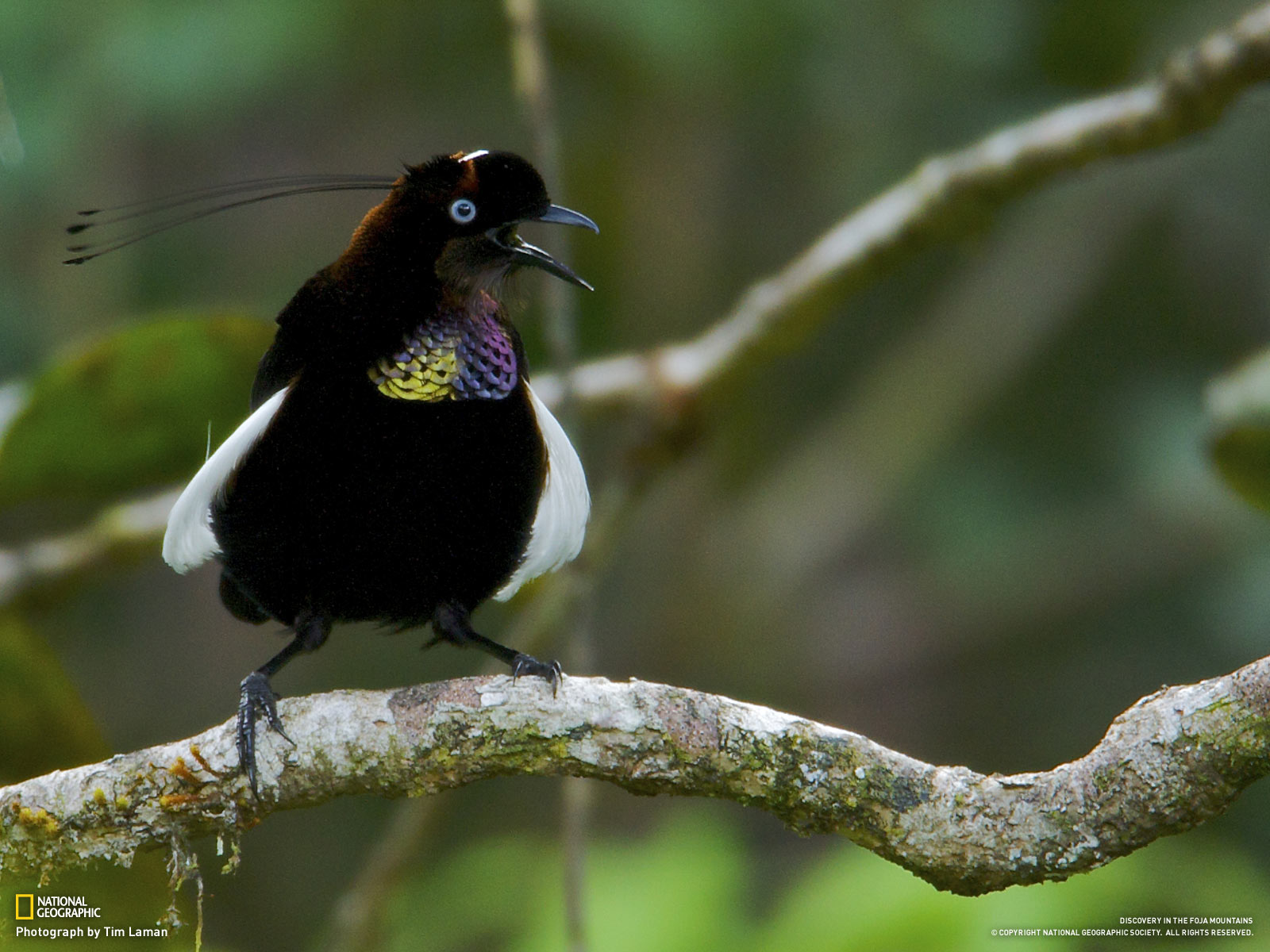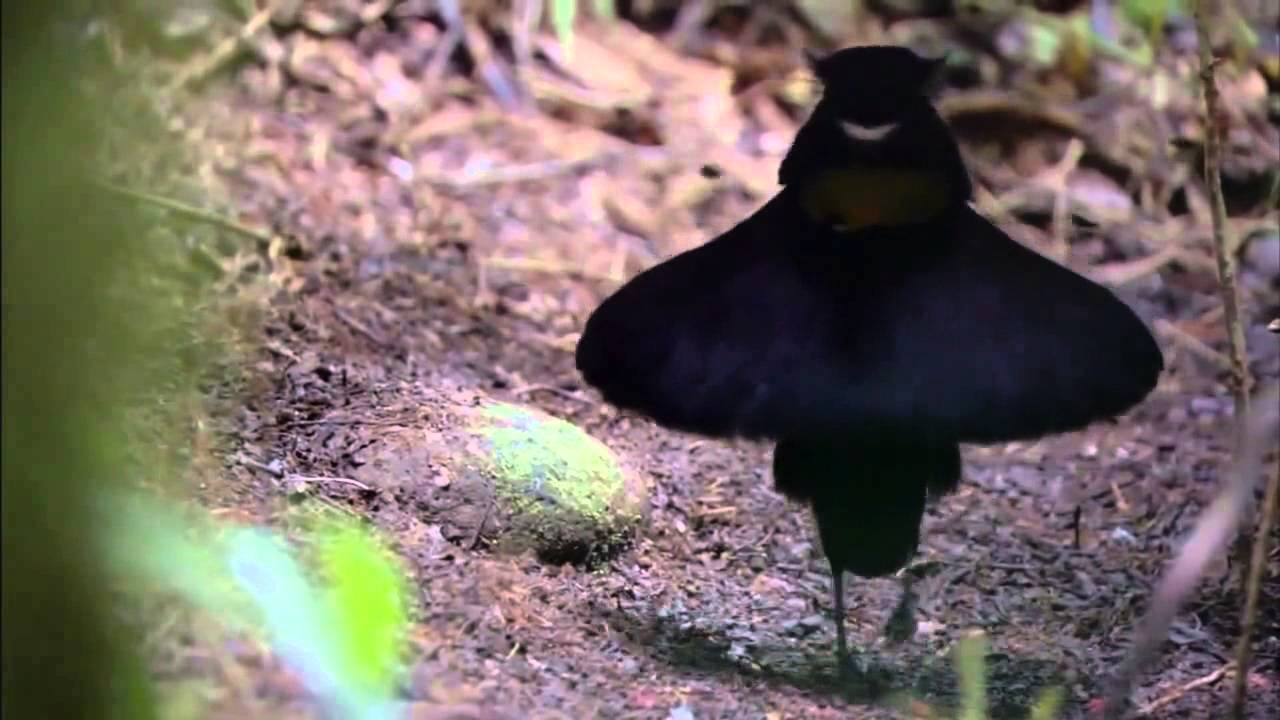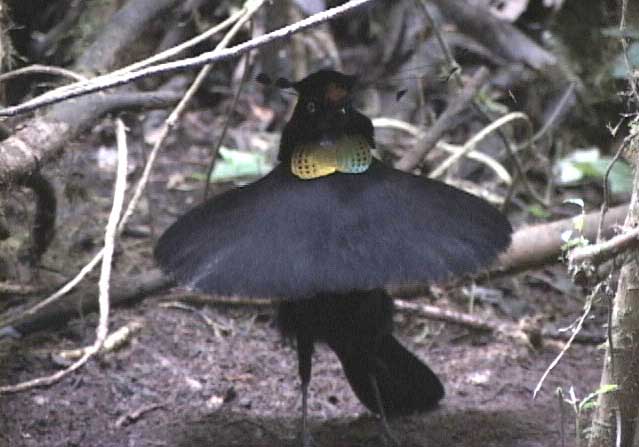
Parotia lawesii
SUBFAMILY
Paradisaeinae
TAXONOMY
Parotia lawesii Ramsay, 1885, Astrolabe Mountains (subsequently
defined as the Aruma Apa-Maguli Mountains, Owen
Stanley Range, Papua New Guinea). Two subspecies.
OTHER COMMON NAMES
English: Lawes’s six-wired bird of paradise, Lawes’s six-wired
parotia, Lawes’s six-plumed bird of paradise, Helena’s parotia;
French: Paradisier de Lawes; German: Blaunacken-Paradeisvogel;
Spanish: Perotia de Lawes.
PHYSICAL CHARACTERISTICS
9.8 in (25 cm); female 0.27–0.37 lb (122–169 g), male
0.34–0.43 lb (153–195 g). Entirely jet black with short tail.
Head decorated with a silvery tuft over base of bill and a
frontal crest of dark coppery feathers. Behind each eye are
three long, black, wire-like occipital plumes with circular tips.
Breast shield of scale-like feathers has highly iridescent yellows,
greens, and violets. Female have brown upperparts, black head
to nape, banded orange and blackish underparts, and lack occipital
plumes.
DISTRIBUTION
The eastern third of New Guinea’s central cordillera, entirely
within Papua New Guinea. P. l. lawesii: western and southern
highlands of Papua New Guinea southeastward into peninsular
Papua New Guinea; P. l. helenae: the northern watershed of
peninsular Papua New Guinea, from Waria southeast to Milne
Bay. Found between altitudes of 1,640–7,540 ft (500–2,300 m).
HABITAT
Midmontane forests including primary mixed oak forest, disturbed
forest, secondary growth, and remnant forest patched
even within extensive village gardens.
BEHAVIOR
Males clear a terrestrial court to dance upon in courtship display.
Courts are typically dispersed to form exploded leks, but
some are solitary. Males advertisement-sing from court perches
or the forest canopy above but remain mostly silent when interacting
with females. Flight swift and buoyant, consisting of
four audible wingbeats followed by a short glide.
FEEDING ECOLOGY AND DIET
Omnivorous, but very predominantly frugivorous. Tears epiphytic
growth from tree limbs to find arthropods.
REPRODUCTIVE BIOLOGY
Polygynous, with promiscuous, solitary, males and exclusively
female nest attendance. Breeds June through January. Nests,
built in large trees and vine tangles, consist of a substatial but
relatively shallow open cup. Only single egg clutches recorded.
CONSERVATION STATUS
Not threatened. Widespread, common, and tolerant of habitat
disturbance.
SIGNIFICANCE TO HUMANS
Plumes of adult males are worn as wig/head dress by highland
men.
Photo Gallery of - Lawes’s parotia




 Animalia Life
Animalia Life